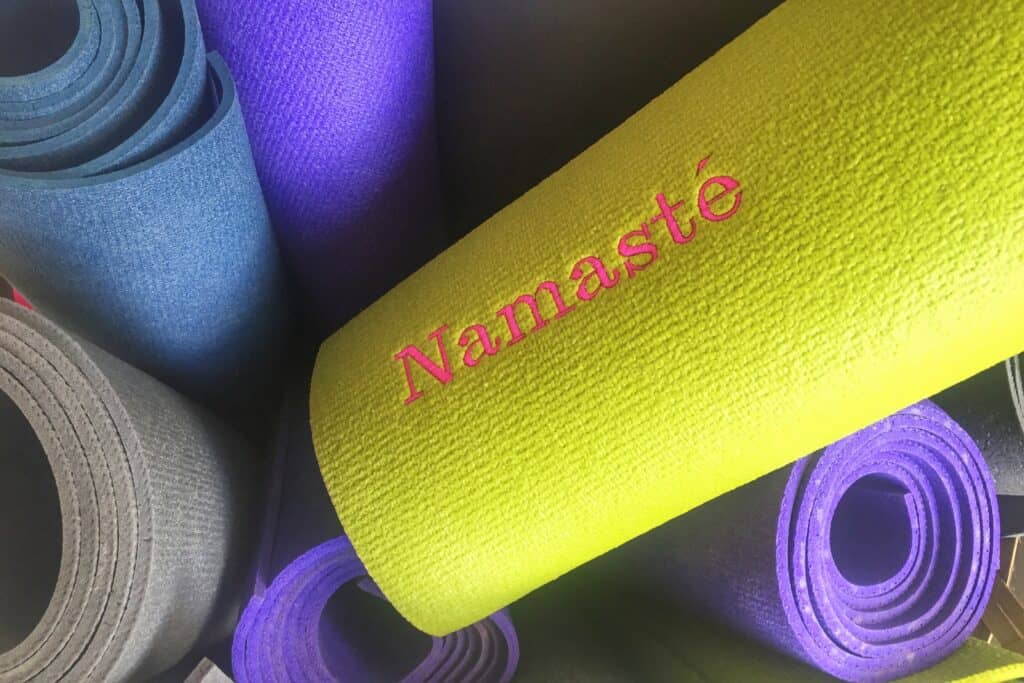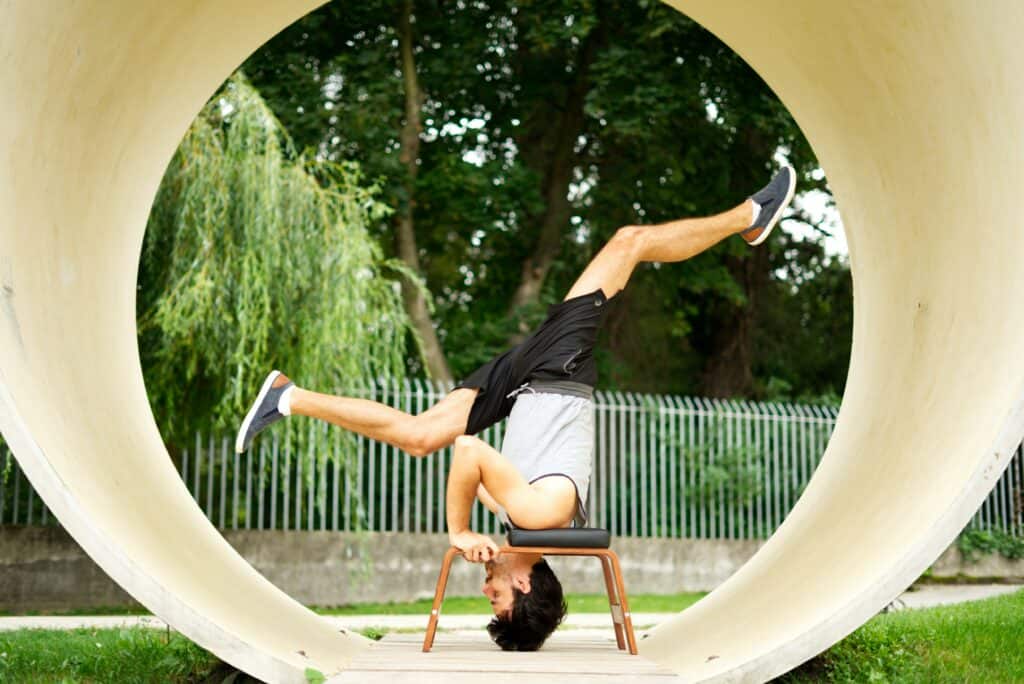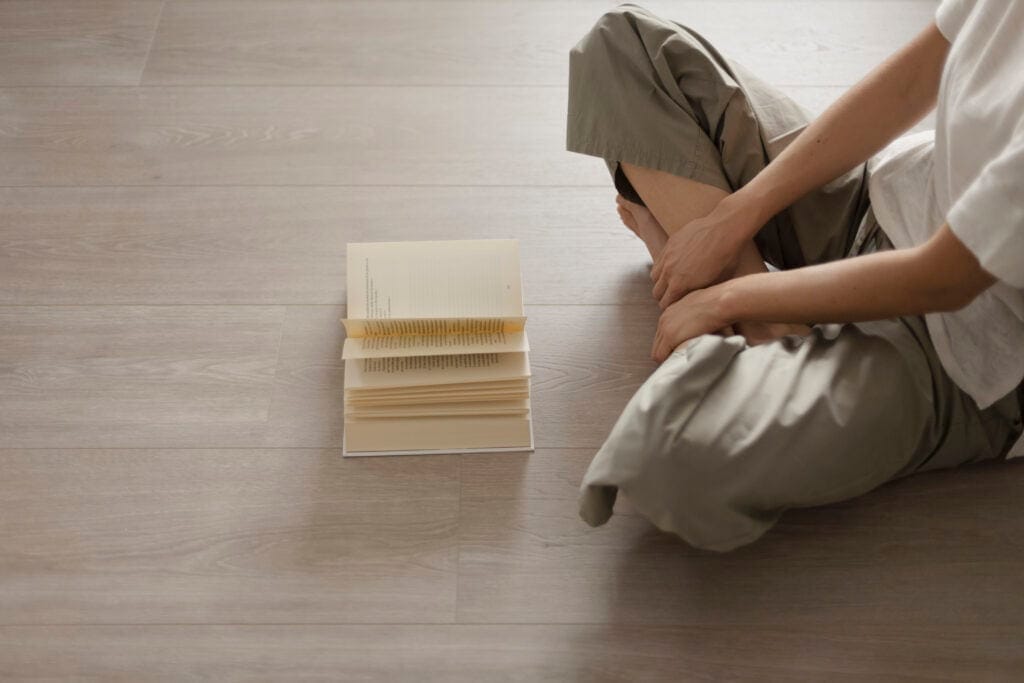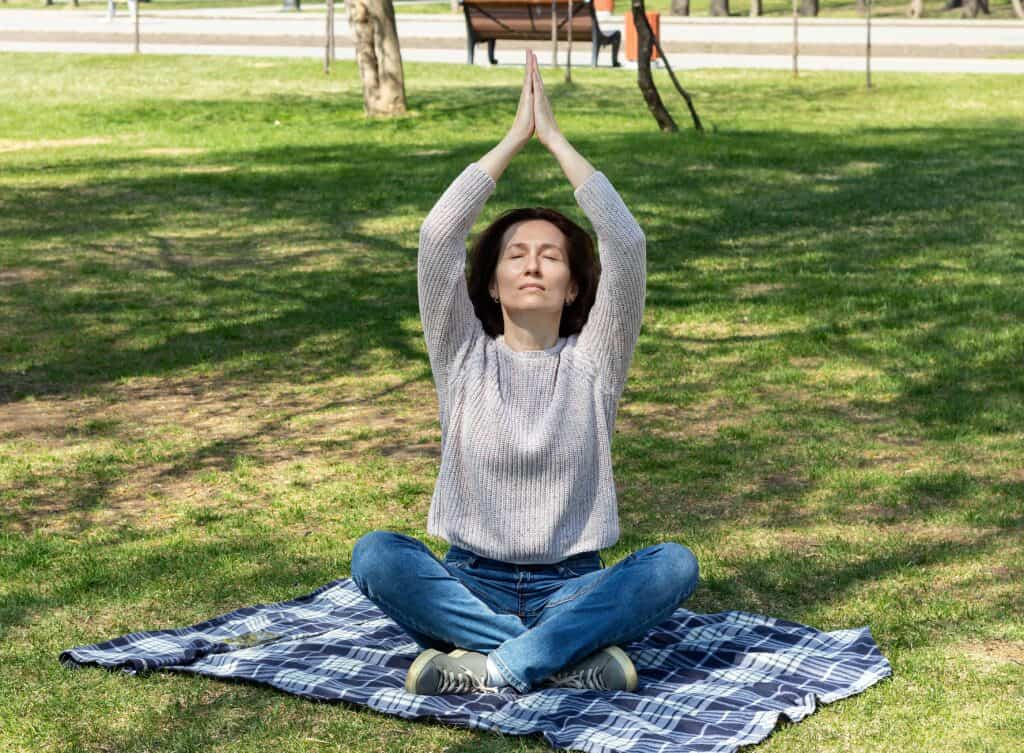When it comes to improving your sleep, yoga is a great tool. It can help you relax and unwind before bedtime, improve the quality of your restful hours, and even reduce stress levels that may be contributing to sleeplessness. Yoga for sleeping has many benefits if done correctly – from postures specifically designed to promote better sleep, to tips on how best prepare yourself mentally and physically for a successful practice session. In this article we’ll explore the various ways in which yoga can help with getting more out of our time spent asleep each night – so read on as we dive into the benefits of using yoga for sleeping!
Benefits of Yoga for Sleeping
Yoga is an ancient practice that has been used for centuries to promote physical and mental wellbeing. Practicing yoga regularly can help improve sleep quality, reduce stress and anxiety, and increase relaxation.
Improved Sleep Quality
Practicing yoga before bedtime can help improve the quality of your sleep. Yoga helps relax both the body and mind, allowing you to drift off into a deep sleep more easily. It also helps reduce cortisol levels in the body which are associated with poor sleep quality. Studies have shown that regular yoga practice can lead to better overall sleeping patterns as well as improved alertness during waking hours.
Reduced Stress and Anxiety
Yoga is known for its calming effects on both the body and mind, making it an ideal activity for reducing stress and anxiety levels before bedtime. By focusing on mindful breathing techniques while performing various poses, practitioners are able to release any tension or worries they may be feeling throughout their day-to-day lives. This allows them to enter a state of relaxation which makes it easier for them to fall asleep at night without being disturbed by anxious thoughts or feelings of worry or fear.
Increased Relaxation
Practicing yoga regularly can reduce stress and increase overall relaxation in both body and mind. The combination of stretching exercises with deep breathing creates a sense of calmness, which leads to greater peace when trying to fall asleep at night. Additionally, improved restful nights’ sleeps from engaging in this beneficial activity prior going off into dreamland each evening results in increased energy during waking hours throughout the day.
Yoga is a great way to improve your sleep quality, reduce stress and anxiety, and relax. Next, we’ll look at how to get started with Yoga for sleeping.
Types of Yoga for Sleeping
Restorative Yoga is a type of yoga that helps to relax the body and mind, allowing for improved sleep. It involves gentle poses held for longer periods of time with the use of props such as bolsters, blankets, and blocks to support the body. This type of yoga can help reduce stress and tension in the body while calming the nervous system. Restorative yoga is especially beneficial before bedtime because it encourages relaxation and restfulness.
Yin Yoga is another form of yoga that can be used to improve sleep quality. Yin Yoga focuses on stretching connective tissues around joints like hips, pelvis, lower spine, etc., which helps increase flexibility in those areas over time. The poses are held for three minutes or more at a time with minimal muscular effort so that your muscles can completely relax into each pose. Practicing Yin Yoga regularly can help reduce stress levels while also improving circulation throughout your body which leads to better sleep quality overall.
Pranayama exercises are an integral part of any yoga practice, but they can be especially beneficial when trying to improve sleep quality and overall wellbeing. Pranayama techniques involve controlling your breath through various breathing patterns such as inhaling deeply then exhaling slowly or holding your breath after an inhalation or exhalation before continuing with regular breaths. These exercises help calm physical and mental agitation by bringing awareness back into our bodies and minds, which allows us to drift off more easily during nighttime hours, leading towards better sleeping habits in general.
Yoga can be a great way to help promote relaxation and better sleep. In the next section, we will discuss some specific types of yoga that can be used for this purpose.
Preparing for a Yoga Session for Sleep
When preparing for a yoga session for sleep, it is important to choose the right time and place. It is best to practice in a quiet space that is free from distractions such as phones, TVs, or other people. Make sure you are comfortable and have enough room to move around freely without feeling cramped. If possible, try practicing outdoors in nature where you can take advantage of fresh air and natural light.
Gather the necessary props and equipment before starting your practice. This may include items like yoga blocks, blankets, bolsters or straps depending on what type of poses you plan on doing during your session. Having these items ready will help make your practice more comfortable so that you can focus on relaxation rather than worrying about having everything set up correctly beforehand.
Finally, set an intention or goal for your practice before beginning each session. This could be something like “I am open to letting go of stress” or “I am allowing myself to rest deeply”, which will help keep you focused throughout the entire experience and allow yourself to get into a deeper state of relaxation while sleeping better at night afterwards.
By setting an intention and preparing the right environment for your yoga session, you can ensure that your practice is effective in helping you to get a good night’s sleep. Next, we will look at some specific poses and breathing exercises to help promote relaxation before bedtime.
Postures to Help You Sleep Better With Yoga
Child’s pose is a gentle and calming yoga posture that helps to relax the body, reduce stress, and improve sleep quality. To practice this pose, start by kneeling on the floor with your knees hip-width apart. Then, slowly lower your torso onto your thighs while keeping your arms extended in front of you or resting alongside your body. Finally, hold this position for several breaths before releasing back into a seated position.
Reclined Bound Angle Pose (Supta Baddha Konasana):
This restorative yoga posture can help to reduce tension in the body and promote relaxation which can lead to improved sleep quality. To practice this pose begin by lying down on your back with both legs bent at 90 degrees so that the soles of your feet are together and close to the pelvis area. Allow yourself to sink into this position as you focus on deep breathing for several minutes before releasing out of it gently.
Legs Up The Wall Pose (Viparita Karani):
Start by sitting sideways against a wall with one side of your hips touching it. Then, swing both legs up onto the wall so they are perpendicular from the ground below you, creating an L shape with them in relation to each other. Remain here for several minutes focusing on deep breathing until ready to release out of it gently when finished. This inverted yoga posture is great for reducing fatigue while also helping to relieve stress levels which can have a positive effect on sleep quality.
Yoga can be a great way to relax your body and mind before bed, allowing you to drift off into a peaceful sleep. In the next section, we will discuss more about which sleep disorders can be helped by a regular yoga practice.
Sleep Disorders That Can Be Helped With Yoga
According to the Centers for Disease Control and Prevention (CDC), one in three adults don’t get enough sleep on a regular basis.
Many of these individuals suffer from some form of sleep disorder, such as insomnia, apnea or narcolepsy. Fortunately, yoga can help improve your quality of rest by targeting specific poses and breathing exercises that address each type of disorder.
Let’s take a look at how different types of sleep disorders can be helped with yoga:
Insomnia
Insomnia is characterized by difficulty falling asleep or staying asleep throughout the night. To combat this issue, try doing gentle stretching poses like Child’s Pose or Cat-Cow before bedtime to relax your body and mind before turning in for the night.
Additionally, practice deep breathing techniques such as diaphragmatic breathing or alternate nostril breathing to calm down your nervous system and reduce stress levels that could be preventing you from sleeping soundly through the night.
Sleep Apnea
Sleep apnea is when an individual experiences pauses in their breath while they are sleeping due to airway obstruction caused by relaxed throat muscles during slumbering hours.
To help alleviate this condition, focus on strengthening postures like Plank Pose which helps build strength in the core muscles responsible for keeping our airways open during sleep time.
Also incorporate pranayama practices into your routine like Ujjayi Breath which encourages deeper inhalations and exhalations while also calming down any anxiety associated with apneic episodes during restful hours.
Narcolepsy
This disorder causes extreme daytime drowsiness along with sudden attacks of muscle weakness known as cataplexy which often occur after strong emotions have been experienced throughout the day.
For those suffering from narcolepsy it is important to practice calming postures such as Legs Up The Wall pose which helps reduce fatigue by increasing circulation throughout the body while simultaneously relieving tension held within tight muscles located around our neck area.
Additionally, incorporating meditation into your daily routine will help bring balance back into both mind and body allowing us to feel more energized even after long days filled with exhaustion.
Tips for Practicing Yoga for Sleep Successfully
Here are some extra tips on how to get the most out of your practice:
Make Sure You Are Comfortable During Your Practice:
It is important that you feel comfortable during your practice in order to maximize its benefits. Make sure you have enough space, use props if needed, and wear clothing that allows for easy movement. Also, make sure the temperature in the room is not too hot or cold so as not to disrupt your focus.
Don’t Push Yourself Too Hard During Your Practice:
While it is important to challenge yourself with each practice session, it is also important not to push yourself too hard or beyond what feels comfortable. Listen to your body and take breaks when necessary in order to prevent injury or fatigue.
Be mindful of your breathing throughout your practice:
Breath work is essential in any yoga practice, but especially when practicing for better sleep quality. Focus on deep breathing techniques such as inhaling through the nose while counting up from one to five and then exhaling through the mouth while counting down from five to one until you reach zero again before repeating this cycle several times over until complete relaxation has been achieved.
By following these tips, you can ensure that your yoga practice for sleep is both comfortable and effective. Next, let’s look at how to choose the right poses for better rest.
When to Seek Help from a Professional
While yoga can be a great addition to help improve your sleep, there are several signs that indicate it’s time to consult with a medical expert about your sleep problems.
If you find yourself waking up frequently during the night, feeling exhausted even after getting eight hours of sleep, or if you experience extreme fatigue throughout the day, these could be signs that something more serious is going on and should not be ignored.
Additionally, if your lack of quality sleep has been impacting your daily life in any way – such as causing irritability or difficulty concentrating – then this could also signal an underlying issue which needs addressing by a professional.
If you suspect there might be an underlying cause behind your poor sleeping habits then it’s important to talk to someone who can provide advice and guidance tailored specifically for you.
A doctor will likely ask questions about lifestyle factors such as diet and exercise habits in order to gain insight into what might be causing your sleeplessness; they may also recommend further tests depending on their findings.
It’s important not to ignore any potential warning signs when it comes to our health so don’t hesitate in seeking out help from a qualified professional if needed!
Seek out professional advice sooner rather than later if necessary; combined with regular yoga practice this should ensure improved wellbeing through better quality slumber each night!
FAQs in Relation to Yoga for Sleeping
Which yoga is best for sleeping?
Yin yoga is often the best choice for those looking to improve their sleep. This type of yoga focuses on long, slow holds in postures that target the deeper connective tissues and joints in the body. The slower pace helps to relax both mind and body, allowing you to drift off into a peaceful slumber. Additionally, Yin yoga can help reduce stress levels which can be beneficial for improving overall quality of sleep. With regular practice, you may find yourself sleeping more soundly than ever before!
Is yoga good before bed?
Yoga can be beneficial before bed, as it helps to relax the body and mind. It can help reduce stress levels, improve sleep quality, and provide a sense of calmness that may carry over into the next day. Additionally, certain poses like forward folds or restorative postures can help to release tension in the body while calming the nervous system. Practicing yoga before bed is an excellent way to wind down for a good night’s sleep.
How can I sleep naturally in yoga?
Yoga is a great way to help you sleep naturally. It helps relax your body and mind, allowing for deeper restful sleep. To start, practice gentle poses such as Child’s Pose or Legs Up the Wall. These will help reduce tension in your body and prepare it for restful sleep. Additionally, incorporate deep breathing exercises into your yoga routine to further calm the nervous system and promote relaxation. Finally, finish with some guided meditation or visualization techniques before bedtime to clear away any lingering stress or anxiety that may be preventing you from sleeping soundly. With regular practice of these techniques, you can soon enjoy natural and peaceful nights of restorative sleep through yoga!
Conclusion
It is important to find the right type of yoga practice that works best for you, as well as preparing yourself properly before each session. Knowing which postures are most beneficial for helping you get a good night’s rest will also help ensure success with this practice. With these tips in mind, yoga for sleeping can become an integral part of your nightly routine and lead to improved health and wellness.
Do you have difficulty sleeping? Yoga is a great solution! It can help to relax your body and mind, reduce stress levels, improve breathing techniques and even alleviate chronic pain. By participating in yoga classes specifically tailored for better sleep or incorporating specific poses into your daily routine, you will be able to get the restful night’s sleep that you need. Wellness guides, venues and programs are available to provide support along this journey – so don’t wait any longer; take action now for a healthier lifestyle!









